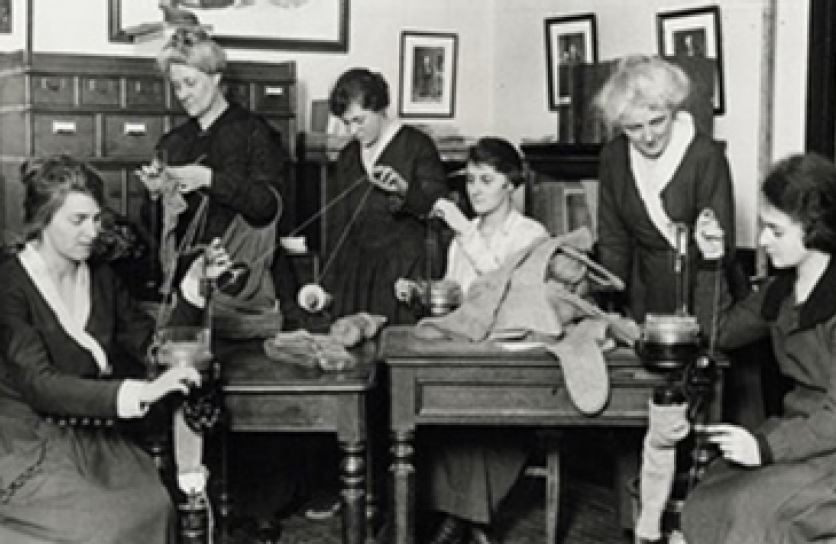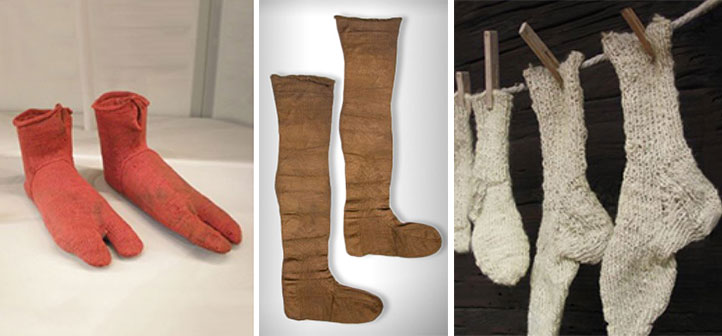The History of Socks
How did socks evolve from simple animal skins in the Stone Age to one of the hottest fashion accessories of the 21st century? In this article, we’ll shed some light on the history of socks and how they have transformed from a functional necessity to one of the most hightech focal points of many sports and leisure apparel brands.
Did you know that our ancestors in the Stone Age tied animal skins around their ankles to keep their feet warm and many would consider this to be the first sock. By the 8th century B.C.E., Greek poet Hesiod wrote of something called ‘piloi’ and is derived from the word pilo, which means hair. Piloi were socks that were made from matted animal hairs. The Romans began wrapping their feet in strips of leather or woven fabric. As the second century A.D. came about, they were wearing ‘udones’. ‘Udones’ were sewn from woven fabric and pulled over the feet.
In Egyptian tombs of the 3rd to the 6th centuries, the first knit socks in history were found. As time went on, Europeans wore socks that were strips of cloth or animal hide that were wrapped around the legs. They called them leggings. Not exactly the fashionable leggings of the 21st century but functional nonetheless. In the 5th century A.D, sock history took a step forward when ‘puttees’ were worn by Europeans to symbolize purity and holiness. As 1000 A.D. approached, socks became a symbol of the nobility. If you had socks, you were considered wealthy. Who knew that many years later in the 21st century footwear and socks would again become a symbol of fashion status.
In the Middle Ages, the legs of pants became lower and more fitted. Hose was a fitted cloth that covered the lower leg. When breeches became shorter, hose got longer. Around the twelfth century, feet were added to the hose. In 1490, breeches and hose were join ed to create tights. They were made of colorful silk, wool and velvet among other materials. Each leg was usually a different color.

Knitted hose were worn in Scotland in the fifteenth century. This fashion moved to France and other parts of Europe. In 1589, the knitting machine was created and the history of socks moved forward. It’s said the machine’s inventor, William Lee, created the machine because the woman he loved would never look up from her knitting needles. Queen Elizabeth I, refused the first pattern because she preferred the smoother stockings from Spain. She said the stockings this machine created were ‘far too coarse for the royal legs.’ If she could only have experienced the hightech yarns we use today in the 21st century.
During the 16th and 17th century, much of the material for socks came from Spain. The socks for women were colorful, embroidered and even had jewels. Men’s socks were made of knitted silk and embroidered with emblems. Cotton came into use in the late 17th century and changed the history of socks forever.

Now we come to the 20th century. Sock innovation continued with the introduction of nylon because of its strength and elasticity. As men’s pants became longer, socks became shorter and the word sock replaced the word ‘stocking’ in common usage. In the roaring twenties, men loved argyle socks. Plain solid colors became more popular throughout the 20th century. In the 21st century, the sock industry has exploded with high tech yarns, bold colors, to combine fashion with function.
We hope you enjoyed this short cut history of socks. Now you can make some sock history of your own.




